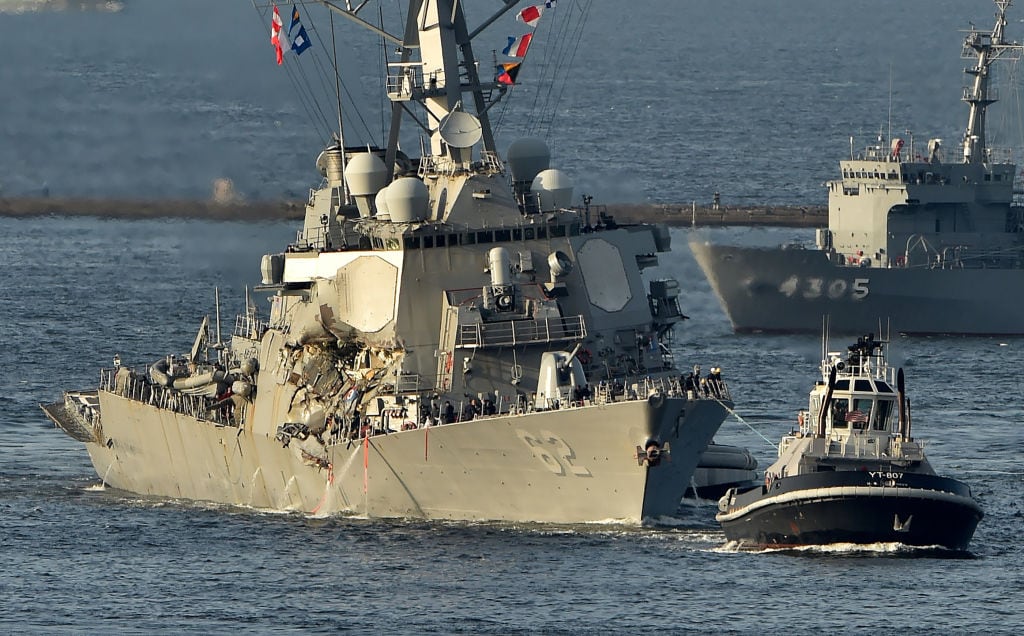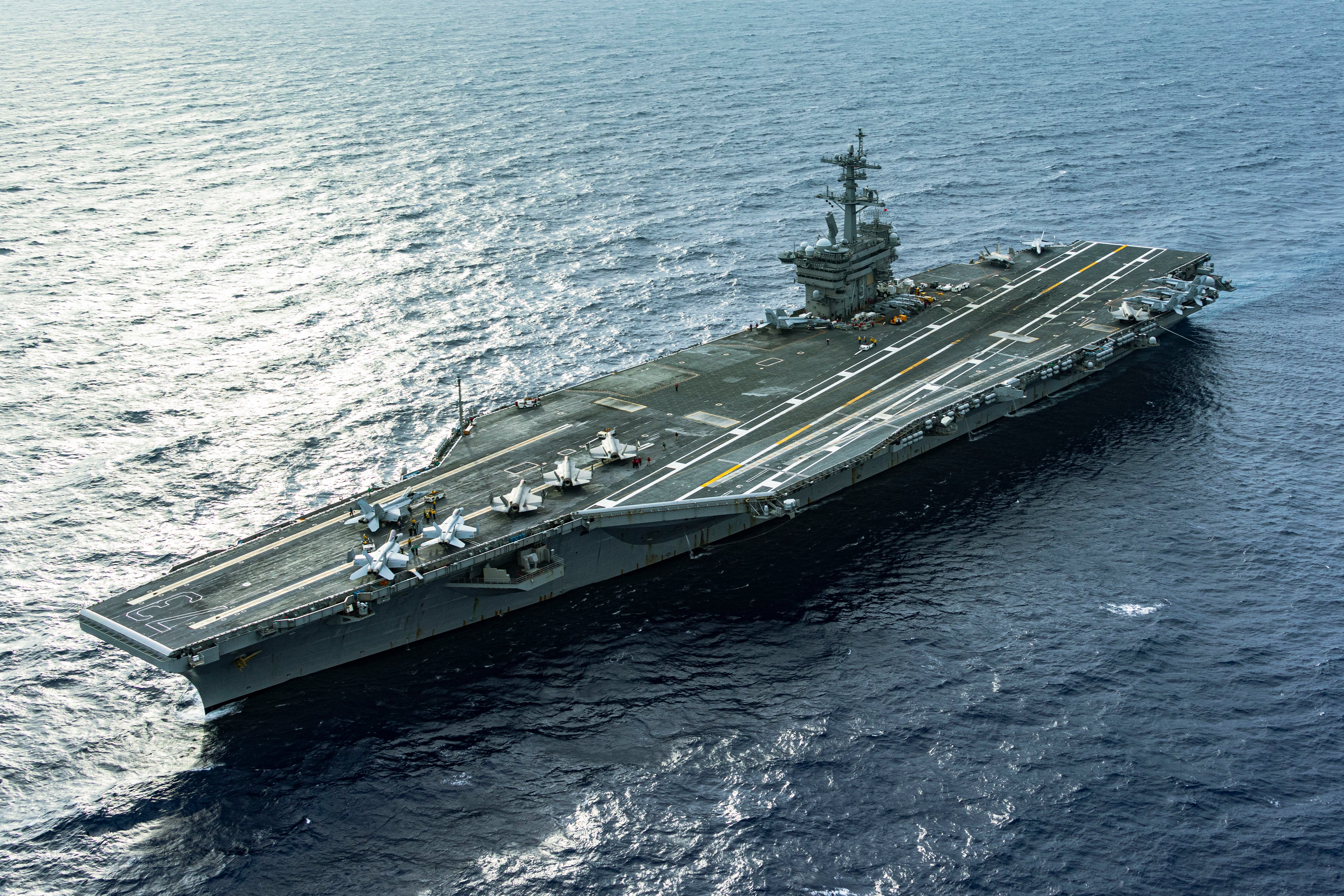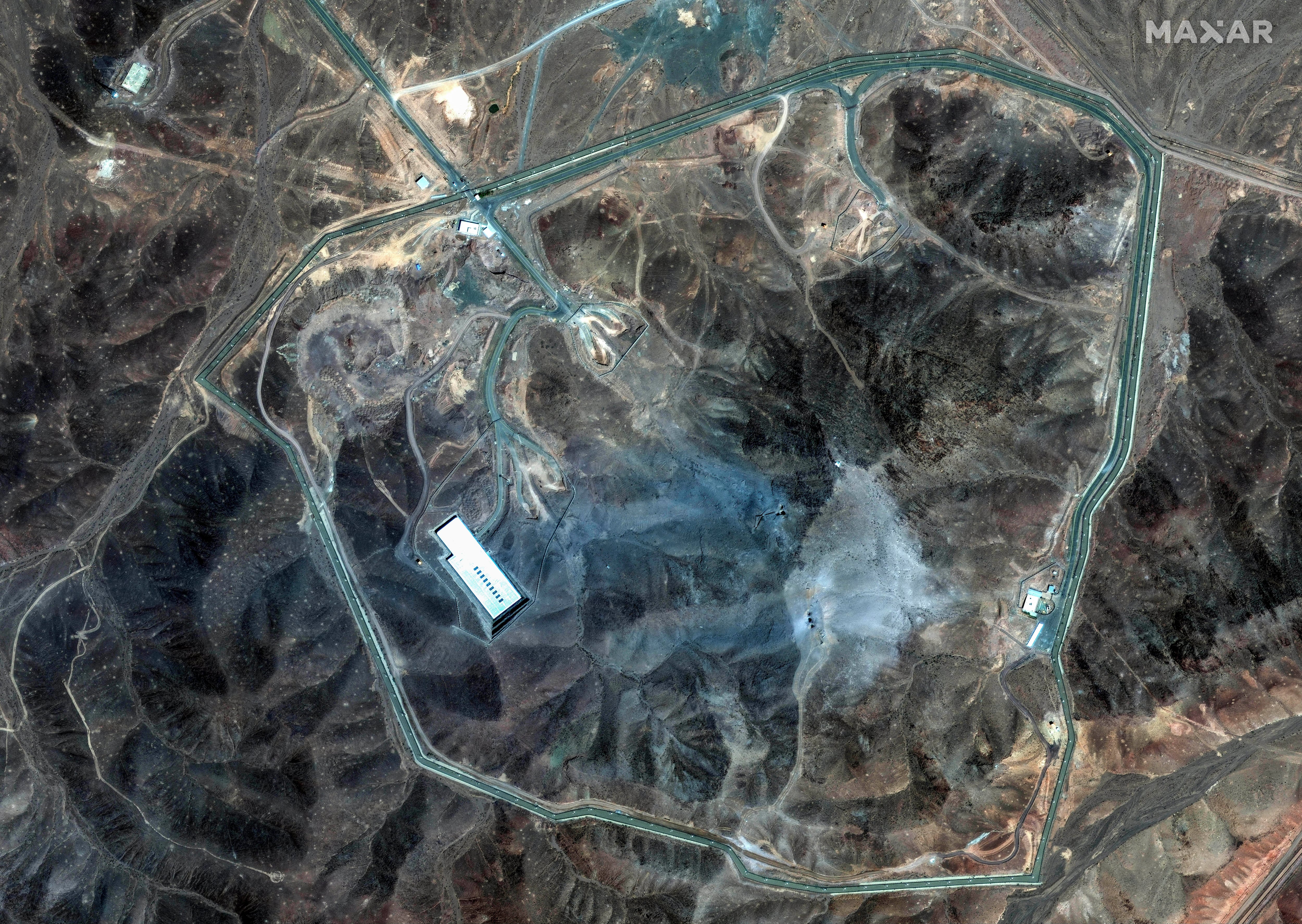WASHINGTON — For the last five years, Bud Couch has been on a quest to make the surface navy safer.
As the director of operational safety at Naval Surface Force Pacific, Couch helped generate 117 recommendations after two U.S. Navy destroyers were involved in separate fatal collisions in summer 2017. But that wasn’t enough.
He knew those recommendations would help, but they wouldn’t fundamentally change how the Navy looked at readiness and safety. So Couch set off to reframe the conversation.
“Given the billions of dollars we’ve dumped into the readiness accounts, and literally the thousands of mishap report recommendations we’ve accomplished, why aren’t we getting measurably better?” he wondered aloud during an interview with Defense News.
Past efforts sought to avoid a repeat of a specific mishap — a recommendation might deal with a particular command-and-control issue that went awry or alter how a piece of gear should be used under certain conditions — but Couch said the Navy needed an entirely new mindset.
So he went to work.
In 2018, Naval Surface Force Pacific established the Human Factors Oversight Council and since then has relied on the group to measure a broad range of sailor-related data, from how much sleep each individual sailor gets each night, and therefore how fit one is to stand watch, to how much training a sailor received and how a sailor scored on proficiency tests, which informs ship assignments. The group looks at a ship’s mishaps during maintenance to determine how likely they are — statistically speaking — to have a certain type of mishap during at-sea operations.
If recommendations alone won’t stop fatal collisions, data might, the argument went.
“We ended up coming up with this thing we call the six common traits of a mishap ship,” said Couch, a former Navy helicopter pilot and amphibious ship captain. “The traits themselves are interesting — it’s kind of a cool checklist to walk around as a leader and say: ‘Are these things happening on my ship?’
“But perhaps more important than the traits themselves is using those variables to ground ourselves in this theory of organizational drift into failure, and then using that theory to go back and think about how we would combat that drift at the [fleet] level and at the [ship] level.”
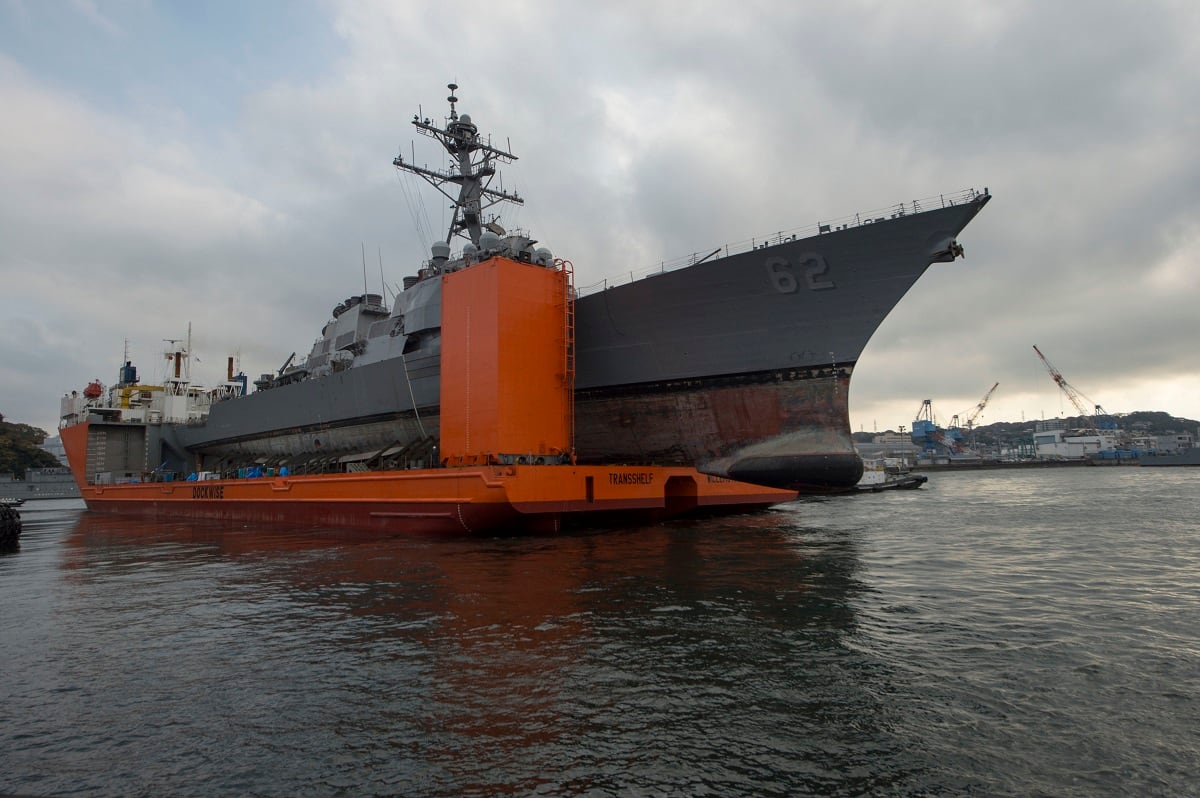
This data-centric focus on how sailor readiness contributes to surface fleet safety comes as the commander of Naval Surface Forces, Vice Adm. Roy Kitchener, works to make the fatal collisions of destroyers Fitzgerald and John S. McCain a course-altering moment for the surface warfare community.
“It was an inflection point for us,” Kitchener said. “We reset our community.”
That, the admiral explained, was done by making changes to organization, training, manning policies and maintenance prioritization — and the Navy isn’t done yet.
“We want to be defined by all the good things sailors are doing every day, not these events that we’re talking about today.”
‘The perfect storm’
In early 2017, the Navy couldn’t see the abundant warning signs that the surface force, and in particular the surface ships based in Japan, was overworked and underprepared. The cruiser Antietam ran aground in Tokyo Bay, causing $4.2 million in repairs and a 1,100-gallon oil spill. An investigation released that spring found the incident “was preventable” and “[t]he primary cause of grounding was human error” — specifically poor seamanship skills and mission planning.
In May, the cruiser Lake Champlain collided with a South Korean fishing vessel, an incident blamed on an inexperienced crew, poor seamanship and unreliable equipment.
Still, U.S. 7th Fleet faced high demand from theater commanders despite not having enough ships. And so ships continued to skip training and maintenance to take on new work.
Then on June 17, the destroyer Fitzgerald collided with the container ship ACX Crystal. The massive merchant ship ripped into the side of the Navy vessel, flooding berthing compartments, mangling the commanding officer’s stateroom and killing seven sailors. Investigators found the collision was precipitated by an inexplicable course change that put the destroyer on track to a clear collision with ACX Crystal, And they reported evidence of poor seamanship, shiphandling, risk management and leadership skills.
Two months later, it happened again: The destroyer John S. McCain collided with the tanker Alnic MC on Aug. 21, killing 10 crew members as the ship tried to navigate the crowded Strait of Malacca with a poor understanding of the rules of the road and confusion about how to use the ship’s new steering system.
The Navy conducted a strategic readiness review and a comprehensive review of recent surface force incidents, which led to 117 recommendations for the service in regard to establishing minimum safety standards; increasing fleet effectiveness by boosting crew size and training; and building a stronger “culture of operational excellence.”
Kitchener said several root problems existed in the surface force, and particularly the high-demand, low-density 7th Fleet surface forces that operate out of Yokosuka and Sasebo in Japan.
“No. 1, clearly the operational tempo versus the readiness generation [was] out of balance, and the balance tipped towards the operational demand,” he said. “No. 2 ... we were underinvested in training as a community.”
Previously, schoolhouses for surface warfare officers had been shuttered in favor of a so-called SWOS in a Box, featuring self-guided training CDs. While that was ultimately reversed, the service hadn’t made enough progress in rebuilding training at the Surface Warfare Officers School.
Another root problem, Kitchener said, was the Navy’s can-do attitude without “a full appreciation or understanding of measuring cumulative risk” that comes with operating at any cost.
“Then the final one ... was fatigue management. It was really nonexistent,” Kitchener said. “There was no prioritization of it, and we had not made investments in it.”
Kitchener said these factors came together as “the perfect storm,” though the Navy was blindsided by it. Today’s data-driven efforts are meant to give the Navy the tripwires and warning lights to avoid returning to such a risky scenario.
Addressing the basics
The comprehensive review of recent surface force incidents, released in early November 2017, highlighted the root problems Kitchener outlined. A quick scan of the table of contents makes clear there’s a long list of problems: poor seamanship and failure to follow safe navigational practices; erosion of crew readiness; headquarters processes that inadequately identified, assessed and managed operational risks; “can-do” culture that undermined basic watchstanding and safety practices.
The Navy has spent the past five years not just addressing these issues, Kitchener said, but doing so in a data-driven way meant to prevent the Navy from backsliding.
Operational tempo drove many of the problems outlined in the review. Japan-based ships in particular faced such demand that they were constantly too busy, which came at the expense of training and maintenance time. Personnel were yanked from one ship crew to fill in for others, meaning sailors didn’t get downtime and the crews didn’t gel as a unit.
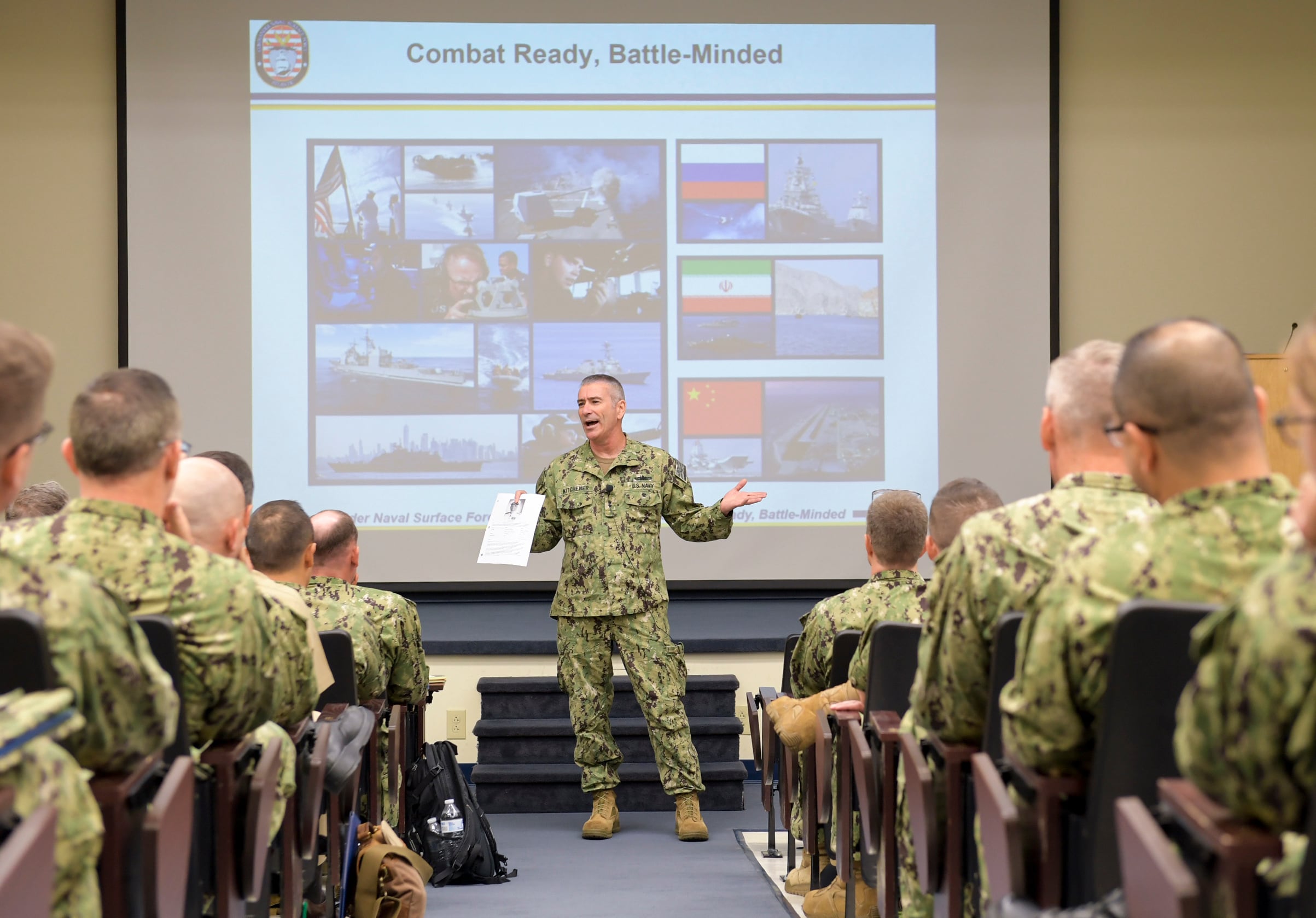
Today, Kitchener can point to maintenance as an area that’s drastically different than five years ago.
When a system goes down on a ship that’s preparing for deployment, “they’re not going to go until we fix it,” he said. That choice of whether to stay for maintenance or go on deployment is now made at the four-star level — either U.S. Fleet Forces Command head Adm. Daryl Caudle or U.S. Fleet Forces Commander Adm. Samuel Paparo.
During his time leading East Coast surface ships and now the entire surface fleet, Kitchener said, the four-star officers have always agreed to delay the deployment to complete maintenance.
In fact, for all ships in the Pacific — both 7th Fleet in Japan and U.S. 3rd Fleet in San Diego, California — all requests from fiscal 2019 to fiscal 2021 to extend a depot-level repair period — despite potentially delaying a ship’s deployment — were approved. This included 29 extensions in FY19; 27 in FY20; and 30 in FY21, according to data provided by Naval Surface Forces.
There’s a second process in place for ships already deployed. A redline instruction from Naval Surface Forces states a ship cannot remain at sea if certain systems go down, unless it receives a waiver from the operational commander. Even then, the approval must be accompanied by a mitigation plan approved by Kitchener or his East Coast counterpart, Rear Adm. Brendan McLane, who commands Naval Surface Force Atlantic.
Consider this example from Kitchener: one of the redline items included is the fluxgate digital magnetic compass, a redundant backup system. For an outage like that, a ship may continue the mission and come back to port as soon as it’s practical for repairs. For a broken shaft, on the other hand, there may be more restrictions, such as an inability to sail alongside another ship or undertake complex evolutions until it’s repaired. And some other items require an immediate return to port.
According to data from Naval Surface Forces, the 7th and 3rd fleets approved 30 of 31 waiver requests since October from ships that crossed a redline — meaning the ships worked with their respective fleet commander and type commander to develop a short-term mitigation plan, remaining underway only until they could get back to port for repairs.
Additionally, ships are entitled to a certain number of continuous maintenance availability days throughout the year — the type of routine care done pierside to keep ships at peak readiness for operations, as opposed to the major upgrades and repairs done at a depot.
Kitchener said 19% of that work was executed in 2017, as opposed to nearly 90% today.
This prioritization of ship readiness over ship deployment is drastically different from 2017, when sailors reported the destroyer Fitzgerald skipped a maintenance period the month before its collision in favor of conducting operations, despite having key sensors and communications systems in degraded condition.
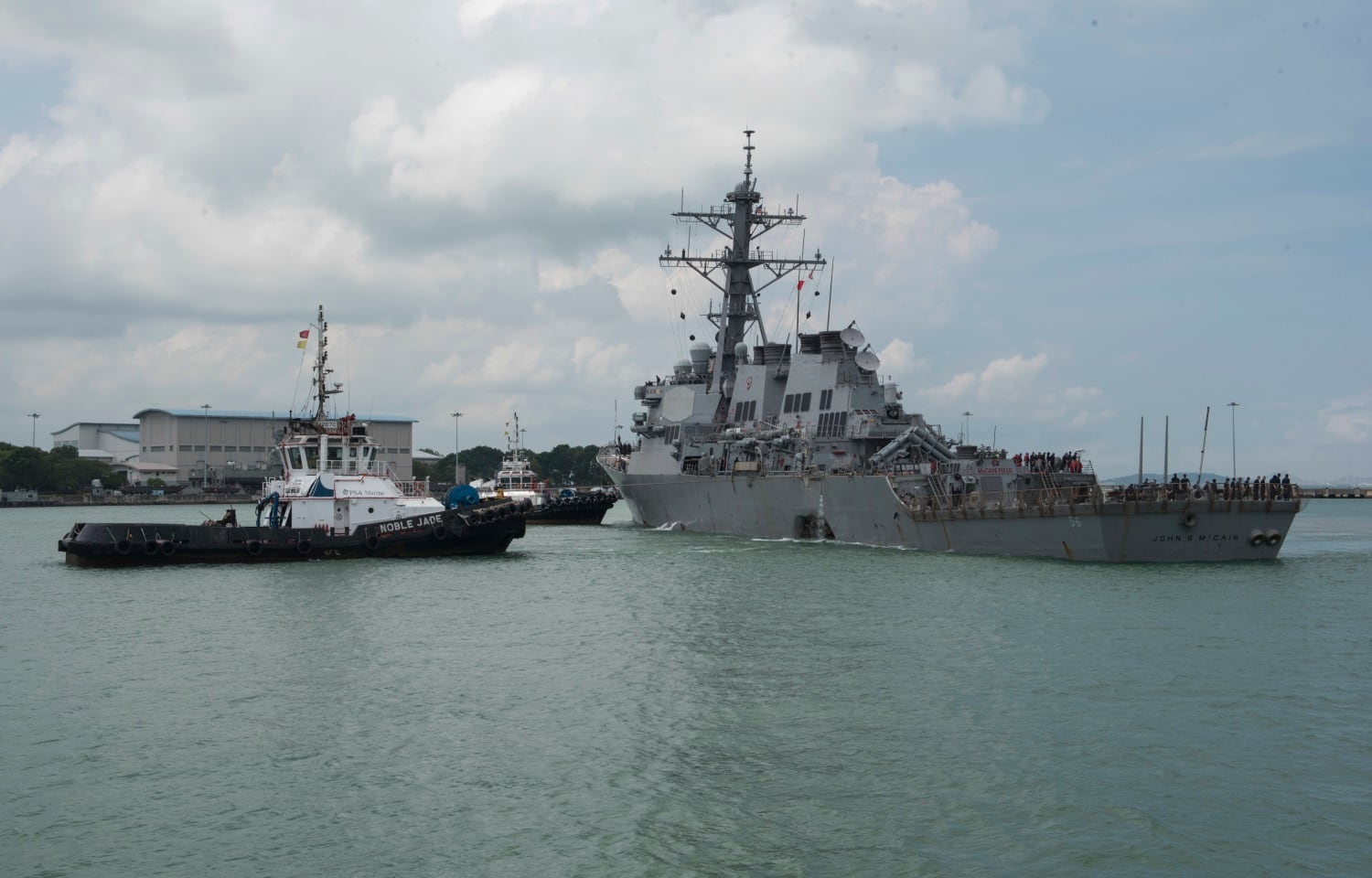
Rep. Rob Wittman, the top Republican on the House Armed Services’ sea power and projection forces panel, said he worries operational tempo is one challenge the Navy hasn’t fixed because the demand for surface forces remains high.
“The operational demands and the size of the fleet are still in disproportion. So when you’re deploying these ships at these rates and you are extending deployments, it not only wears out that the ship but it wears out the crew,” the Virginia lawmaker said.
Capt. Chase Sargeant leads surface ships in 7th Fleet as commander of Task Force 71. He also knows how things used to be, having served as executive officer and then commanding officer of the destroyer McCain from April 2012 to May 2015.
Sargeant acknowledged the operating tempo remains high in 7th Fleet, but said there’s an important difference from 2017: an ability to prioritize missions so that his task force can honestly assess how many ready ships are available and which missions it should focus on, instead of trying to urgently meet all requests.
The data-informed prioritization “allows us to then rework schedules, postpone or find more opportune places in the schedule when maybe we have more ships available to source those missions, and ensure that we are meeting the most critical and highest-priority missions,” he said.
A new approach to safety
Couch was hired by Naval Surface Forces in 2014 to serve as the operational safety officer. After serving on the group that wrote the comprehensive review, he believed there was still more to do to understand fleetwide safety and risk.
In response, he helped establish in 2018 the Human Factors Oversight Council, which continues to weigh how the Navy can measure and improve human performance to bolster operational safety.
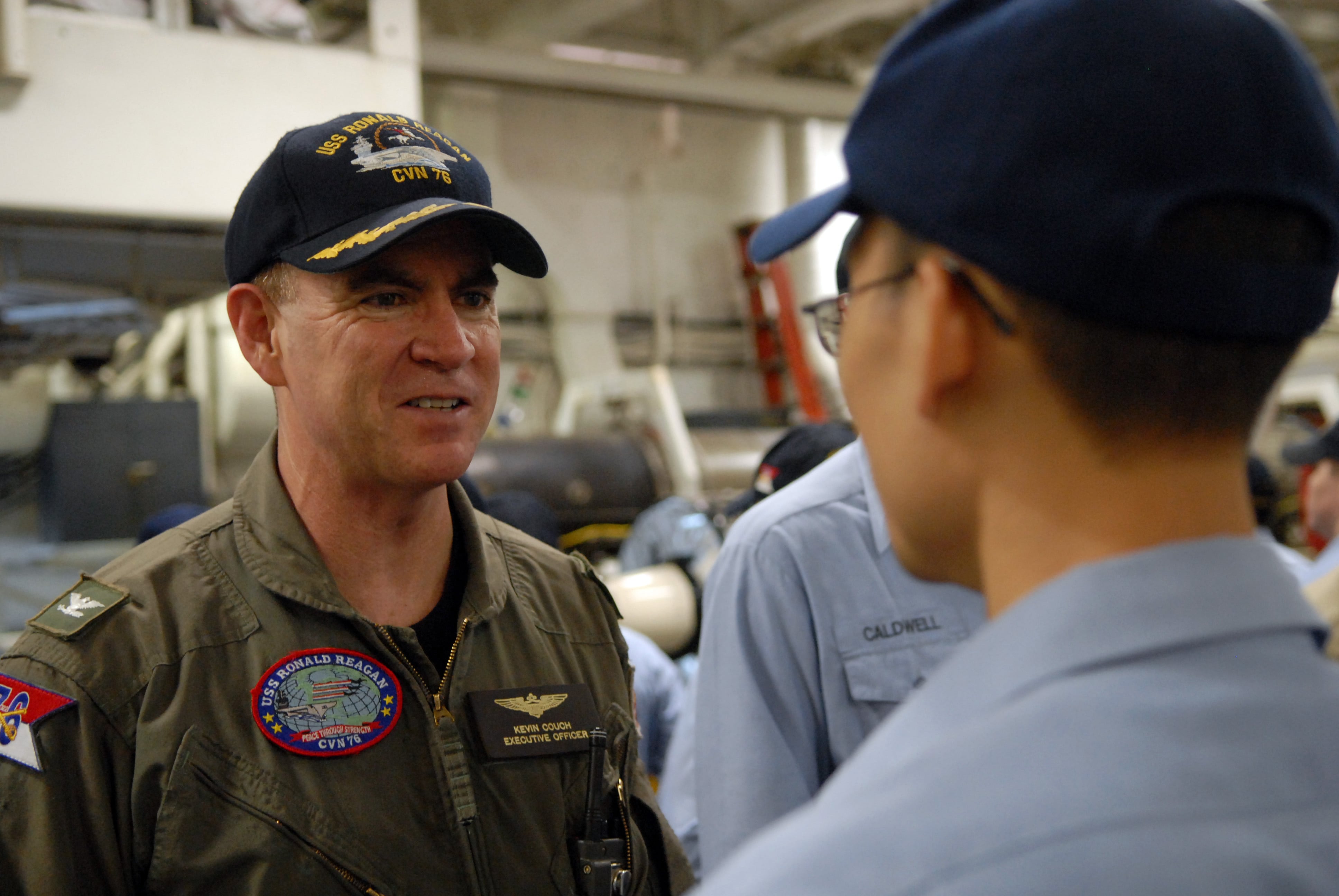
Couch said the council quickly moved to address sailor fatigue — an issue identified as a factor in both the Fitzgerald and McCain collisions. The in-development Crew Readiness, Endurance and Watchstanding program is collecting sleep data from sailors’ wearable devices to determine whether they’re fit to stand watch — going so far as to flag a sailor after one bad night of sleep, Couch said, to make that person’s team aware the sailor may need help staying alert.
Medical research has found fatigued people struggle to pay attention, can make poor or slow decisions, and may fall asleep on the job — which could be catastrophic during at-sea operations. Couch said this was a key starting area for the council as it sought to tie the readiness of individual sailors to the cumulative risk of the fleet.
The Navy has prioritized a circadian rhythm work schedule — where sailors are allotted at least seven hours for sleep at the same time each day — with meetings scheduled around participants’ sleep and meal times.
Couch said data has shown that, although sailors are given time to sleep, they aren’t always as well rested as leadership might assume; sometimes, sailors use sleep time to finish paperwork or communicate with loved ones, or sometimes they can’t sleep well despite the uninterrupted time.
This detailed look has led the human factors group to study improved monitors and nighttime displays, better light-blocking rack curtains, and more comfortable mattresses that can help a sailor get a deeper sleep.
Sargeant said his cruisers and destroyers in 7th Fleet adhere to all these practices, and that Task Force 71 has looked for additional ways to build sailor resiliency, including putting chaplains on all the ships and increasing mental health resources at the task force level.
“Nothing is a magic fix for resiliency, but they all go towards providing tools, providing programs for sailors so that they’re more fit. [We’re] building toughness in them so that they can stay in when we have them out on operations for extended periods of time,” Sargeant said.
The ultimate goal is to develop an Operational Safety Information and Risk Indicator System, or OSRI, that will flag people, crews or task groups operating with too many red flags, drawing leadership attention to the situation before it turns deadly.
But that system will require significant amounts of qualitative and quantitative data, which Kitchener is working to establish.
Several groups — the Afloat Training Group, carrier strike groups 4 and 15 that oversee at-sea training, the Naval Surface and Mine Warfighting Development Center, the Board of Inspection and Survey, Naval Safety Command, and more — have regular touch points with ships and could begin feeding every observation and measurement into the system, Kitchener said.
The surface navy has also started sending so-called Afloat Safety Climate Assessment Surveys to sailors — but not the command triad — for feedback on fatigue issues. Kitchener said that model has been successful in collecting honest feedback, and the approach will be used for other topics.
“The hard analytics — the man, train and equip, where we can measure that — and then [add] the people science that we got from our human factors folks,” the admiral said. “Compare that to the hard analytics, and you can paint a pretty good picture.”
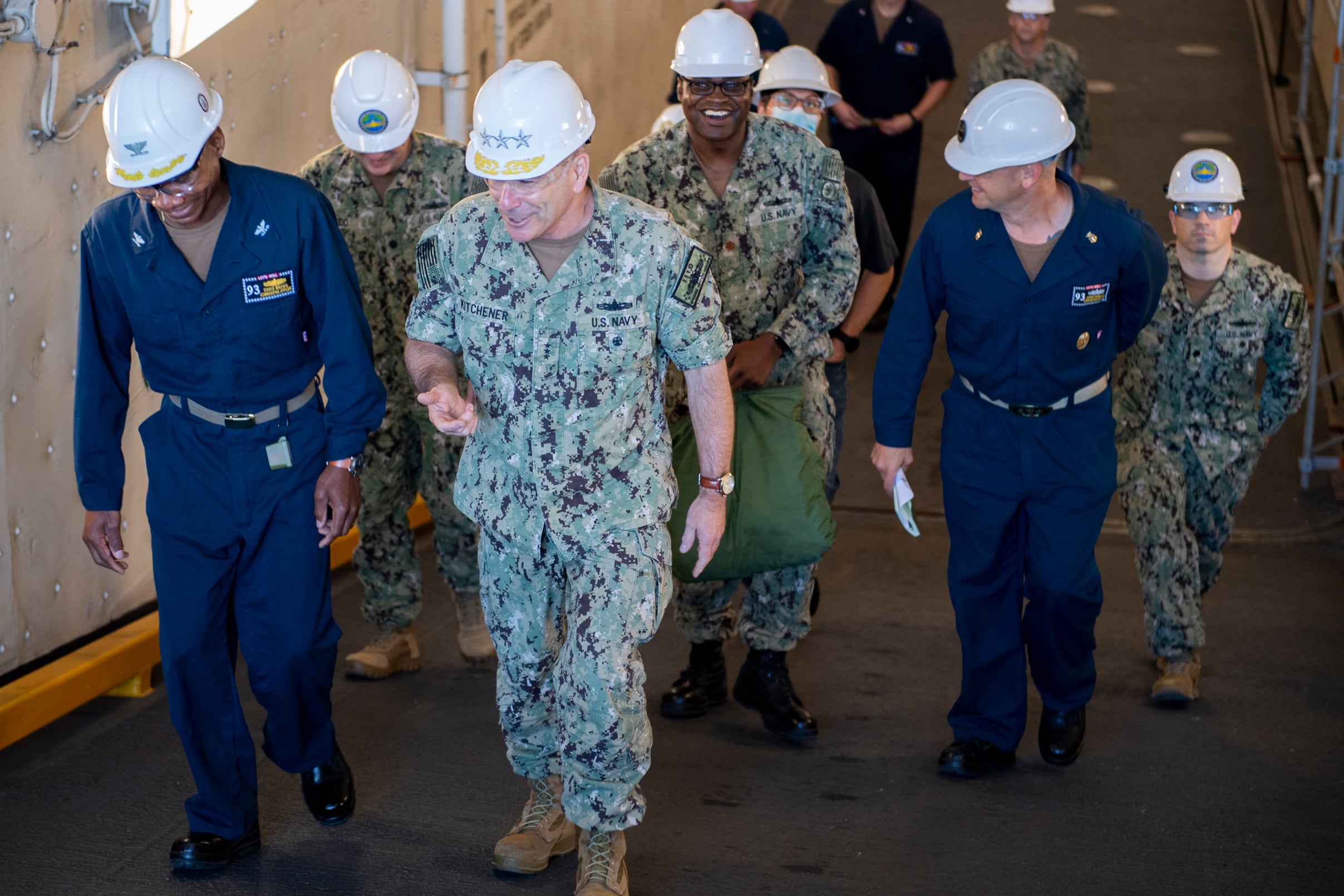
An inflection point
Wittman praised the Navy for making rapid changes to training, for starting to use predictive maintenance and data analytics tools to improve on-time maintenance rates, and for codifying its prioritization of maintenance and training time so future leaders can’t backtrack.
But, he said, the real measure of success will come years down the road.
“The key is not just gathering the data, or not just putting in place advanced sensors to [generate data]. How do you incorporate the data in an operational way … that actually results in change in how you manage the fleet?” he said. “The true test is going to be: Does that result in improved performance?”
Wittman, who led the House Readiness Subcommittee before moving to the sea power panel, said readiness tends to be the bill-payer in tight budgets, which could be the case again if inflation continues to eat into defense spending.
“I like where the Navy is going, trying to cast this in a permanent way organizationally to where it can’t be set aside during tough times. But the only way that you’re really going to measure that is to come up on those tough times, and we haven’t seen that since 2017,” he said. “I am cautiously optimistic that this is an organizational change that is permanent for the Navy.”
Kitchener believes all the changes are codified in a way that his successors will remain equally attentive to readiness. To ensure that’s the case, the Navy last year established the Learning to Action Board to avoid past mistakes.
In the aftermath of the Fitzgerald and McCain collisions, the Navy established a Readiness Reform and Oversight Committee to oversee the implementation of the 117 recommendations from two reviews. Though Rear Adm. Peter Vasely, who leads the Learning to Action Board, said most were implemented, it’s been difficult to measure their impact and to incorporate those new measures into Navy-wide learning.
The 2020 loss of the amphibious assault ship Bonhomme Richard due to a catastrophic fire during a maintenance availability, and the subsequent investigation and review, further proved the Navy continues to experience preventable disasters, Vasely said.
“We’re seeing the same mistakes being repeated time and time again,” he said. The board will aim for not just “taking the implemented corrective actions for that immediate incident, but then how are we taking those lessons learned and applying those … to ensure that we are not repeating those mistakes.”
Vasely said the organization’s goals are to provide high-level visibility into the progress of how post-disaster recommendations are implemented; to provide transparency and accountability for following through with implementations; to turn the actions into Navy-wide learning; and to assess the effectiveness of the measures once implemented.
The Learning to Action Board started with the Bonhomme Richard fire and a major fires review as its proof of concept. Already the team sent out a pulse survey, asking the command triads of 21 ships to answer questions related to risk during their maintenance availabilities. The answers came back within two weeks and highlighted four primary concerns: manning shortfalls; training associated with fire response and safety; equal safety compliance between the ship crew and the contractor; and the mental health of sailors in long maintenance periods.
Vasely said the Learning to Action Board will tackle the Fitzgerald and McCain collisions as its next project, looking to ensure the permanent implementation of the 117 recommendations and the translation of those surface-specific recommendations into broader ideas to make the whole Navy safer.
“One of the key things that we realized as we’ve gone through the Bonhomme Richard and the major fires review iteration is that we’re not getting after … the long-term success of what this will look like, which is: How do we get left of bang?” he said. “How do we look at the data … and identify those negative trends that are posing significant risks that, if unchecked, if we don’t surge on them, that basically will result in a potentially catastrophic event or a pinnacle-level event?”
A fifth goal for the board now, he said, is meant to be more proactive, “looking at negative trends that come up — so think about [inspector general] investigations, area assessments, think Naval Safety Command or hazard reports that come through, think about pulse surveys that go out to the fleet that come back — all provide data that, really, there has not been a repository or a mechanism to look at that data to determine the negative trends, to arrest the negative trends from turning into a pinnacle-level event.”
For Kitchener, turning lessons from the past into forward-looking predictive analytics is a critical endeavor.
“We cannot allow those lives that were lost to be in vain,” he said.
Megan Eckstein is the naval warfare reporter at Defense News. She has covered military news since 2009, with a focus on U.S. Navy and Marine Corps operations, acquisition programs and budgets. She has reported from four geographic fleets and is happiest when she’s filing stories from a ship. Megan is a University of Maryland alumna.
